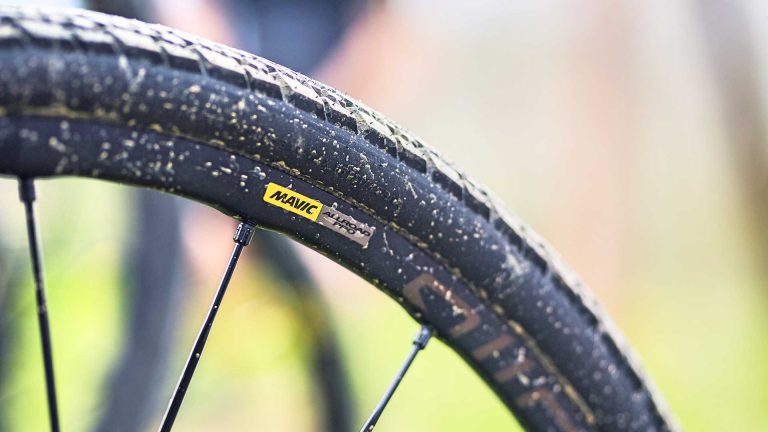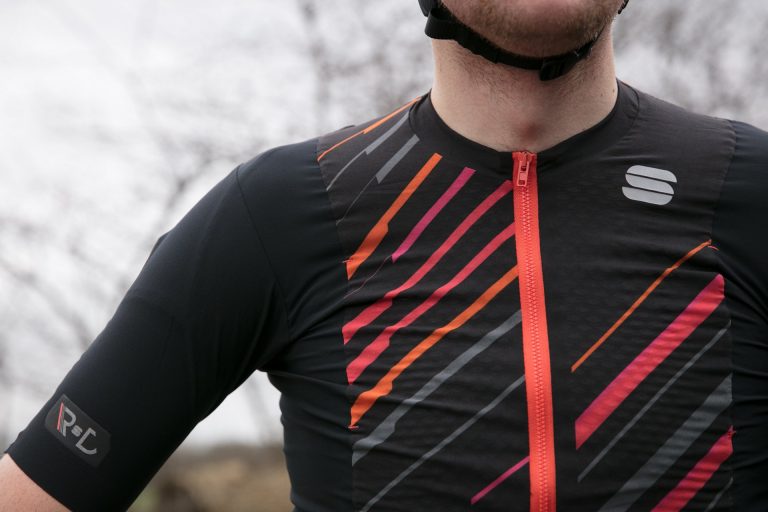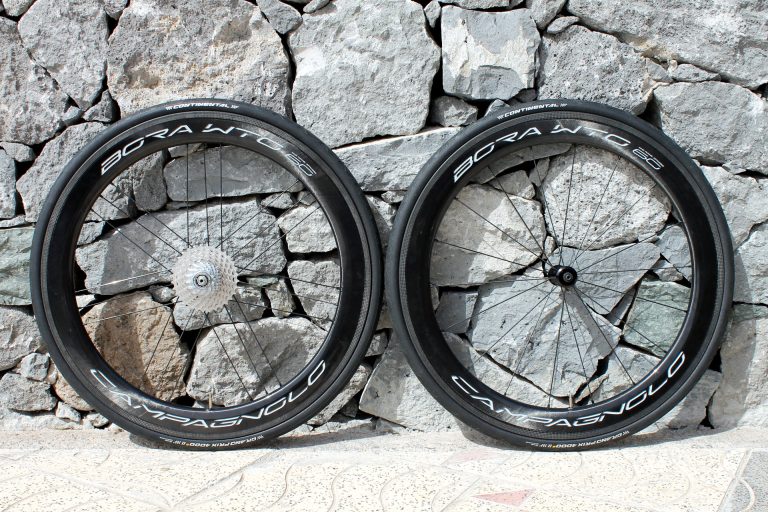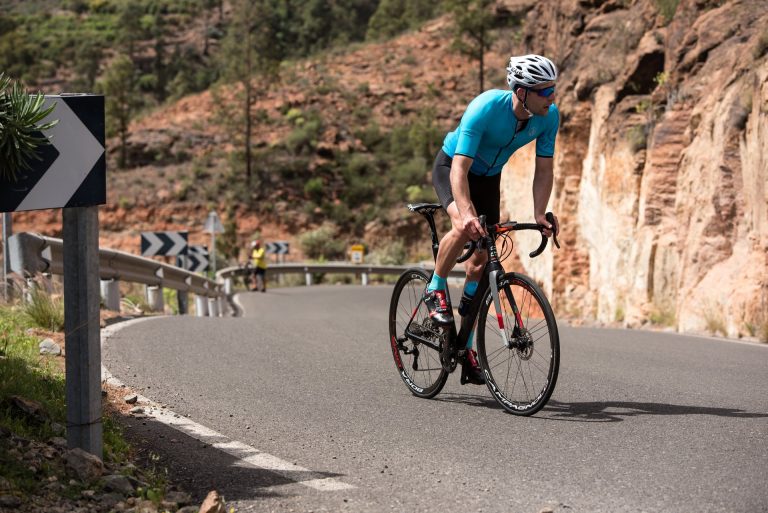Hot on the heels of the v650 computer launched earlier this year, Polar have reaffirmed their intention to grab back a share of the bike computer market with the launch of the m450.
“The major message today is: we’re back in cycling”, proclaimed Polar’s European Commercial Director Gian Paolo Facchini, before adding that Polar’s aim with the m450 is to provide the best bike computer available for between €100-200.
Far from already rendering the v650 obsolete, the m450 is designed to complement the already available device. Given that Garmin lead the market by some margin, think of it as Polar’s Edge 510, with the v650 as Polar’s Edge 810. It’s going to be an uphill battle, but the Finnish company are at least starting a concerted effort to make Garmin think that they have a battle on their hands.
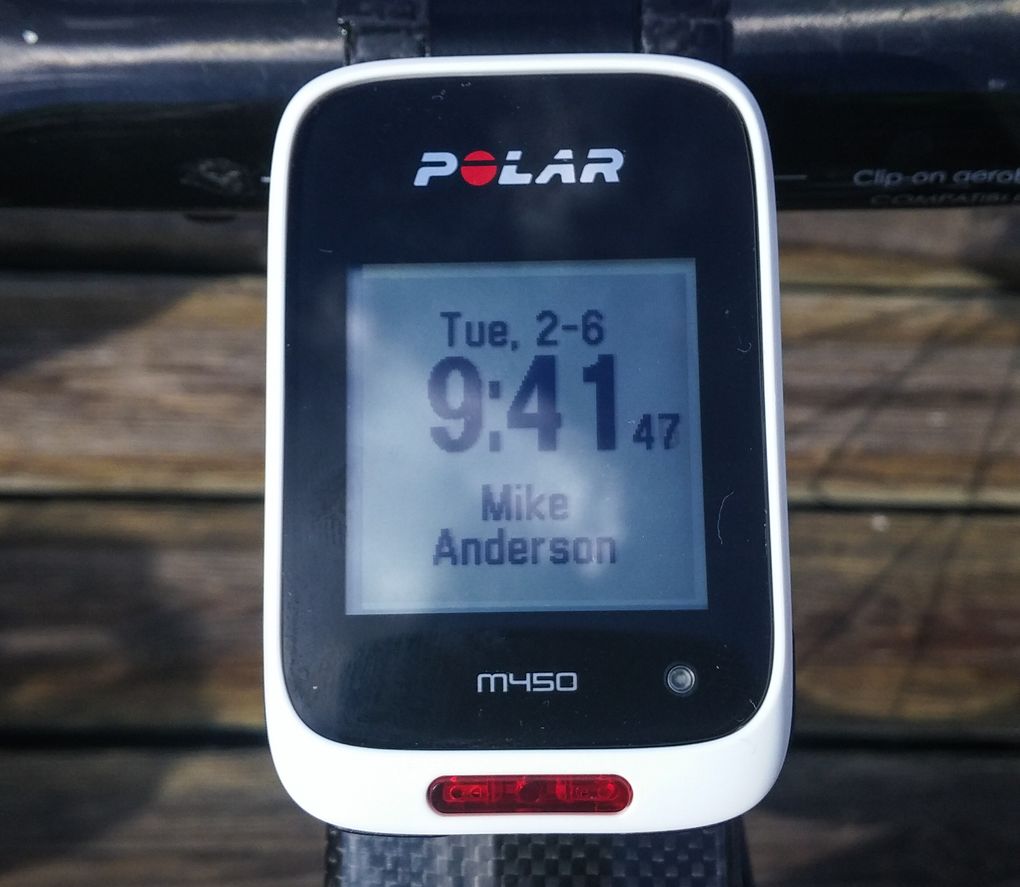
The details
The m450 is smaller and slicker than it’s big brother, but retains a solid amount of the functionality. In fact, the main thing that you won’t get with the m450 is the mapping which Polar have literally just added to the v650 anyway (it’ll be available as a firmware upgrade in the next few weeks). Speaking of the v650 mapping, it’s actually rather a smart idea. Instead of the maps being hosted on the device like with most other computers, you select the area you’re in and the m450 downloads a 400km squared cross section. Admittedly, this could be an issue if you’re planning on riding more than 200km in a particular direction, but that’s not a problem most of us should have too often.
The idea behind the m450 is that it opens up Polar’s bike computer platform for more than just dedicated roadies, although Polar were keen to stress that there’s plenty of functionality for them as well. It’s also going to be relatively cheap, the European RRP is €159.90, or €199.90 with the H7 heart rate strap. Even if that RRP were to translate directly into pounds – which it almost certainly won’t because it would make the difference between the m450 and v650 negligible, you’ll be getting quite a lot in an affordable package.
In terms of the stats, the m450 looks competitive. The 34.65mm x 34.65mm transreflective display is beautifully clear, despite its size, and Polar have sensibly gone with a standard black and white which I personally still think is all you need on a bike computer in 90 per cent of situations. Connectivity is Bluetooth Smart, and Polar have made it very clear that they’re committed to that medium as they believe that it’s more future proof than ANT+, although they did admit that the obvious reason that they’re not using ANT+ is exactly what everyone suspects: because it’s owned by Garmin.
To a certain extent, I think they might be half right. Although the predictions of an ANT+ demise are hugely premature, many devices and sensors are now coming with Bluetooth Smart and ANT+ (even Garmin’s own), so while grabbing yourself a Bluetooth Smart computer may not leave you cackling as all the ANT+ devices are thrown onto the scrapheap, you’re almost certainly getting something that will be compatible with many new releases from various companies over the next few years. On the other hand, you won’t be able to use it with any devices that only transmit data via ANT+.
One of the more interesting claims made by Polar is that the m450 has the most advanced GPS of any bike computer on the market – an especially big claim considering that Garmin, with their background in satellite navigation, are the company with the background in that area.
They also claim that the m450 will give you at least 18 hours of battery life with all sensors (speed, cadence and power) active, as well as having capacity for 35 hour of training data storage. Mounting is taken care of by Polar’s quarter-turn mount which, as I mentioned in my first ride review of the v650, has a ratchet-style system which actually provides far more than just the one possible degree of orientation. Again, in practice, this won’t matter most of the time, but if you wake up with a burning desire to mount the computer in a strange place (on a cat, for example) or need to alter the orientation so that the mounting cables don’t interfere with your brake or gear cabling, it could be very useful. Whether or not you use them, it’s always nice to have possibilities.
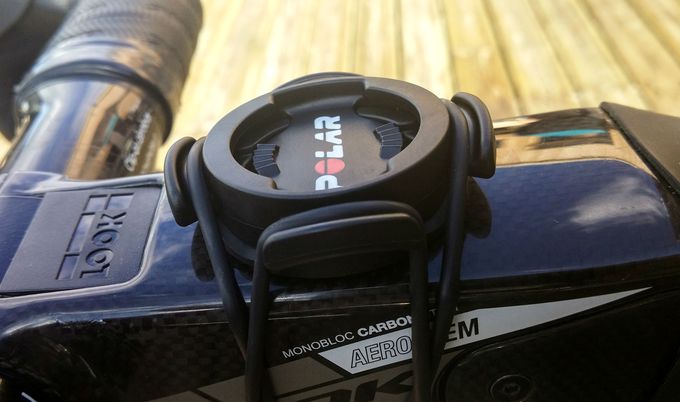
One thing that Polar were keen to stress for both the m450 and the v650 is that there will be plenty of firmware upgrades over the coming months, such as the ability to get call and text notifications on screen (I can’t express you how pointless that function still seems to me). On the surface that might sound like they’ve released a computer that’s not quite finished, but one positive is that it shows Polar are committed to the devices long-term.
The final, and totally aesthetic, touch is that the white back of the m450 is removable, and there are a variety of different colours you can replace it with should you want to match the computer to your bike. Totally non-functional, but quite nice nonetheless.
Polar Flow
One of the aspects of bike computers that’s vitally important now is the online platform and connectivity to third-party platforms like Strava. And speaking of the orange-loving purveyors of segment-based joy, Polar have announced that their Flow online service will have automatic upload capability to Strava before the end of the year. Of course, you can still manually upload your files to Strava now, but seamless integration just makes things a bit less of a pain.
It’s an important move, because Polar Flow is still in its comparative infancy, and it’s not going too far to say that certain aspects of the service are clunky at best. You first download the Flowsync bridging app – like Garmin Express – and that handles communication between your device and the Flow online version. There’s also the ability to wirelessly upload through your smartphone, cutting out the need to connect the device to a computer, and rides will auto-upload providing the two are connected as soon as you climb off your bike.
First impressions
The overall look and size of the computer are big plusses. I’m one of those that feel that although the functionality of bike computers has improved hugely over the last decade, the corresponding increase in size to the point where they now rival smartphones is rather irritating. It might be one of the prices you have to pay for the functionality, but it still leaves a huge niche out there for people that want a small computer that’ll do the essentials. It’s partly why there are still plenty of riders using a Garmin 500 or 510, because when you’re out training the ‘advanced’ functions like mapping or text notifications just aren’t essentials, when all you want is the raw data. Overall the look is very polished, other than the USB port cover that Polar say is the final piece of the puzzle to be adjusted before the unit goes into production.
The five-button interface on the m450 takes a little getting used to. The large, red button on the front starts an activity and also starts a new lap, while the button on the left-hand side turns on the backlight. Of the two buttons on the front side, the left of the two moves the unit back a screen, while the right one scrolls down the page. And the button on the right hand side scrolls up. In all honesty it’s not the most immediately intuitive system but doesn’t take too long to get used to.
Out riding, and the screen is very good. Easy to see even in direct sunlight, there was never a moment when I had to adjust my position in order to figure out what was going on. Similarly, the heart rate is excellent, as you’d expect from the company that pioneered heart rate monitoring technology. Over the course of a three-hour ride, heart rate readings stayed consistent and there were no problems with the signal at all.
One of the big claims about the m450 is Polar’s assertion that the GPS in the unit is the most advanced in a bike computer to date. I found that uptake was quick, and I’ve certainly struggled far more to get computers to connect in a new location for the first time, although being on the top of a mountain Alpe d’Huez, if you were wondering) probably helped in that regard as there was far less to interfere with the signal, unlike in the city where you may be surrounded by tall, signal-blocking buildings. Having said that, my unit did briefly drop signal a couple of times during the ride – only for a few seconds each time – but the locations that the drops happened weren’t places you’d expect, so that’s something I’ll definitely be looking to keep an eye on when we get a production unit in for review.
It’s hard to cast an anywhere near definitive verdict after having so little time with the m450, but on the surface it looks like a solid rather than spectacular unit. Ultimately, Polar’s biggest challenge will be tempting a huge portion of the market to switch from Garmin, and even though the m450 is a neat little unit that should come in at an excellent price, it’s hard to see what it has that will make current Garmin users want to bin their current device and grab one of these. However, we’ll be getting a production unit in the next few weeks, so stay tuned for a full review in the not too distant future.
Website: Polar

